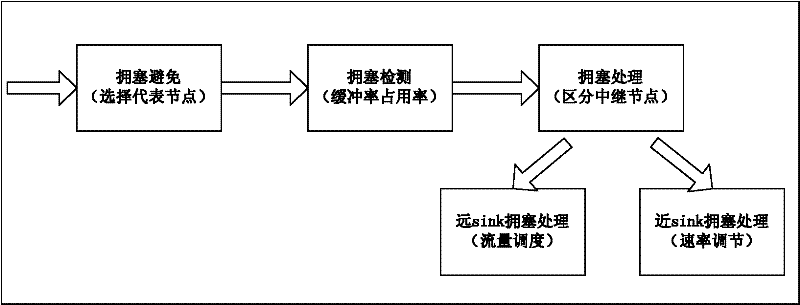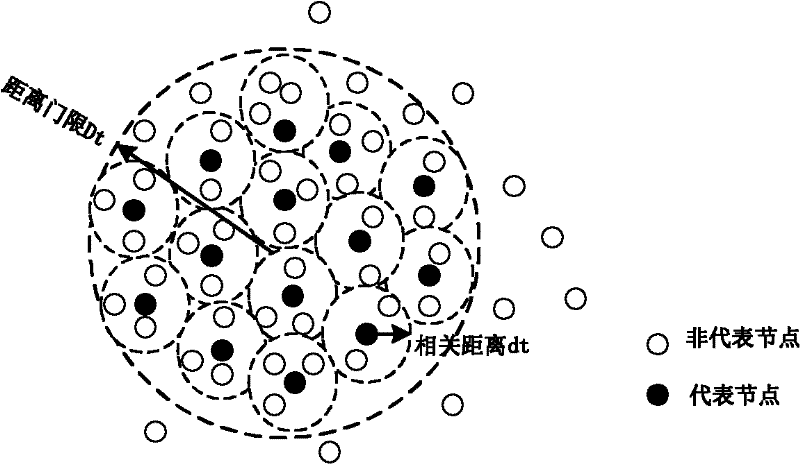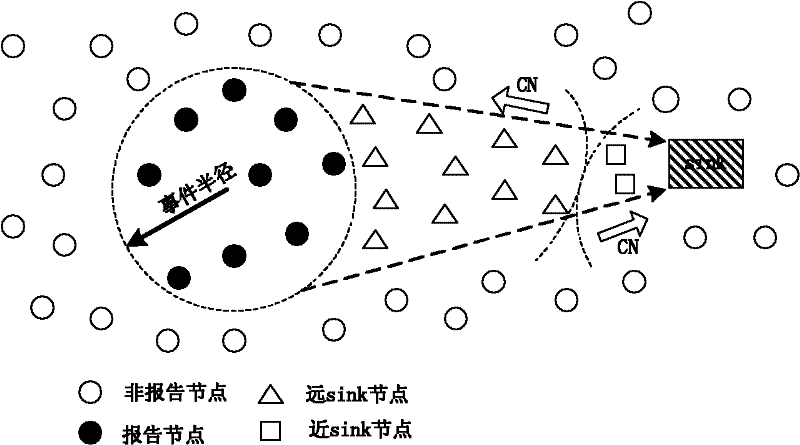Congestion control method for wireless sensor network
A wireless sensor and congestion control technology, applied in network topology, wireless communication, network traffic/resource management, etc., can solve the problems of not distinguishing between different source nodes, relying on rate control, lack of fairness, etc., to reduce network energy consumption, The effect of alleviating the congestion problem and making the distinction method simple
- Summary
- Abstract
- Description
- Claims
- Application Information
AI Technical Summary
Problems solved by technology
Method used
Image
Examples
Embodiment Construction
[0041] The invention relates to a wireless sensor network-oriented congestion control method. The first stage is the selection of representative nodes to avoid congestion at the WSN source; the second stage is congestion detection, and the nodes predict the congestion at the next moment according to the size of the local buffer possibility; the third stage is congestion handling. According to the number of hops to the sink, the nodes between the source and the sink are divided into far-sink nodes and near-sink nodes. If the far sink node detects congestion, it will send a post-congestion notification, using a congestion processing method based on traffic scheduling; if the near sink node detects congestion, it will send a forward congestion notification to the sink, and start rate adjustment.
[0042] The wireless sensor network-oriented congestion control method proposed by the invention is not only applicable to the wireless sensor network, but also applicable to wireless ne...
PUM
 Login to View More
Login to View More Abstract
Description
Claims
Application Information
 Login to View More
Login to View More - R&D
- Intellectual Property
- Life Sciences
- Materials
- Tech Scout
- Unparalleled Data Quality
- Higher Quality Content
- 60% Fewer Hallucinations
Browse by: Latest US Patents, China's latest patents, Technical Efficacy Thesaurus, Application Domain, Technology Topic, Popular Technical Reports.
© 2025 PatSnap. All rights reserved.Legal|Privacy policy|Modern Slavery Act Transparency Statement|Sitemap|About US| Contact US: help@patsnap.com



